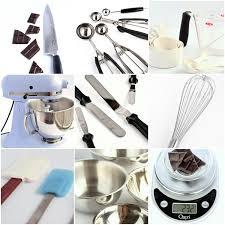Essential Cooking Tools for Every Kitchen
Cooking is both an art and a science, and like any craft, it requires the right tools. Whether you're a beginner or a seasoned home chef, having the proper cooking tools can make the difference between a stressful cooking experience and an enjoyable one. This article explores the essential cooking tools every kitchen should have, helping you prepare meals more efficiently and with greater ease.
1. Knives: The Cornerstone of Every Kitchen
No kitchen is complete without a good set of knives. The three most essential knives are a chef’s knife, a paring knife, and a serrated bread knife. A sharp chef’s knife is your go-to tool for chopping, slicing, and dicing vegetables, meats, and herbs. A paring knife is perfect for smaller tasks like peeling fruits or deveining shrimp, while a serrated knife is ideal for cutting through crusty bread or tomatoes without squishing them.
2. Cutting Boards: Protect Your Counters and Knives
Cutting boards not only protect your countertops but also your knife blades. Wooden or bamboo boards are gentle on knives and have a natural resistance to bacteria. Plastic boards, on the other hand, are easier to sanitize and are often color-coded to prevent cross-contamination between meats and vegetables.
3. Measuring Cups and Spoons: Precision Matters
For baking and cooking, accurate measurements are key. A set of measuring cups and spoons ensures you use the right amounts of ingredients. Dry measuring cups are typically used for flour and sugar, while liquid measuring cups, usually made of glass or plastic, are used for milk, water, and oil. Measuring spoons are handy for spices and other small quantities.
4. Mixing Bowls: Versatile and Essential
Mixing bowls come in a variety of sizes and materials, from stainless steel to glass. They're essential for combining ingredients, marinating meats, or even serving salads. Stackable sets save space and offer the right size for every task.
5. Cookware: Pots and Pans for Every Dish
Quality cookware is the backbone of a kitchen. A basic set should include a non-stick skillet, a stainless steel sauté pan, a saucepan, and a large stockpot. Non-stick pans are great for cooking eggs or pancakes, while stainless steel pans are ideal for searing and deglazing. A heavy-duty stockpot is perfect for soups, stews, and boiling pasta.
6. Utensils: The Right Tools for the Job
Spatulas, ladles, tongs, whisks, and wooden spoons are must-have kitchen utensils. Each serves a different purpose: spatulas are perfect for flipping or scraping, tongs offer a firm grip for turning meat, and whisks are essential for emulsifying and mixing. Wooden spoons don’t scratch non-stick surfaces and are durable for long-term use.
7. Colander or Strainer: Drain with Ease
Draining pasta, rinsing vegetables, or separating solids from liquids all require a reliable colander or strainer. Stainless steel or mesh options work best for a variety of tasks in the kitchen.
8. Thermometer: Cook Safely and Accurately
A food thermometer helps you ensure that meats are cooked to a safe internal temperature, preventing undercooking or overcooking. Digital thermometers offer quick, accurate readings and are simple to use.
9. Grater and Peeler: For Finishing Touches
A box grater offers different sizes of grating surfaces for cheese, vegetables, or zest. A sturdy vegetable peeler makes prep work faster and safer than using a knife, especially when peeling potatoes or carrots.
10. Storage Containers: Keep Leftovers Fresh
A set of airtight storage containers is crucial for storing leftovers or prepped ingredients. Clear containers help you quickly identify contents, and stackable designs save space in the fridge or pantry.
Conclusion
Having the right cooking tools doesn’t mean you need a drawer full of gadgets. Focus on investing in versatile, durable items that support your cooking habits. These essential tools make your kitchen more functional and your cooking more enjoyable. With the right equipment, you’ll be better prepared to tackle any recipe and explore the world of culinary possibilities.

